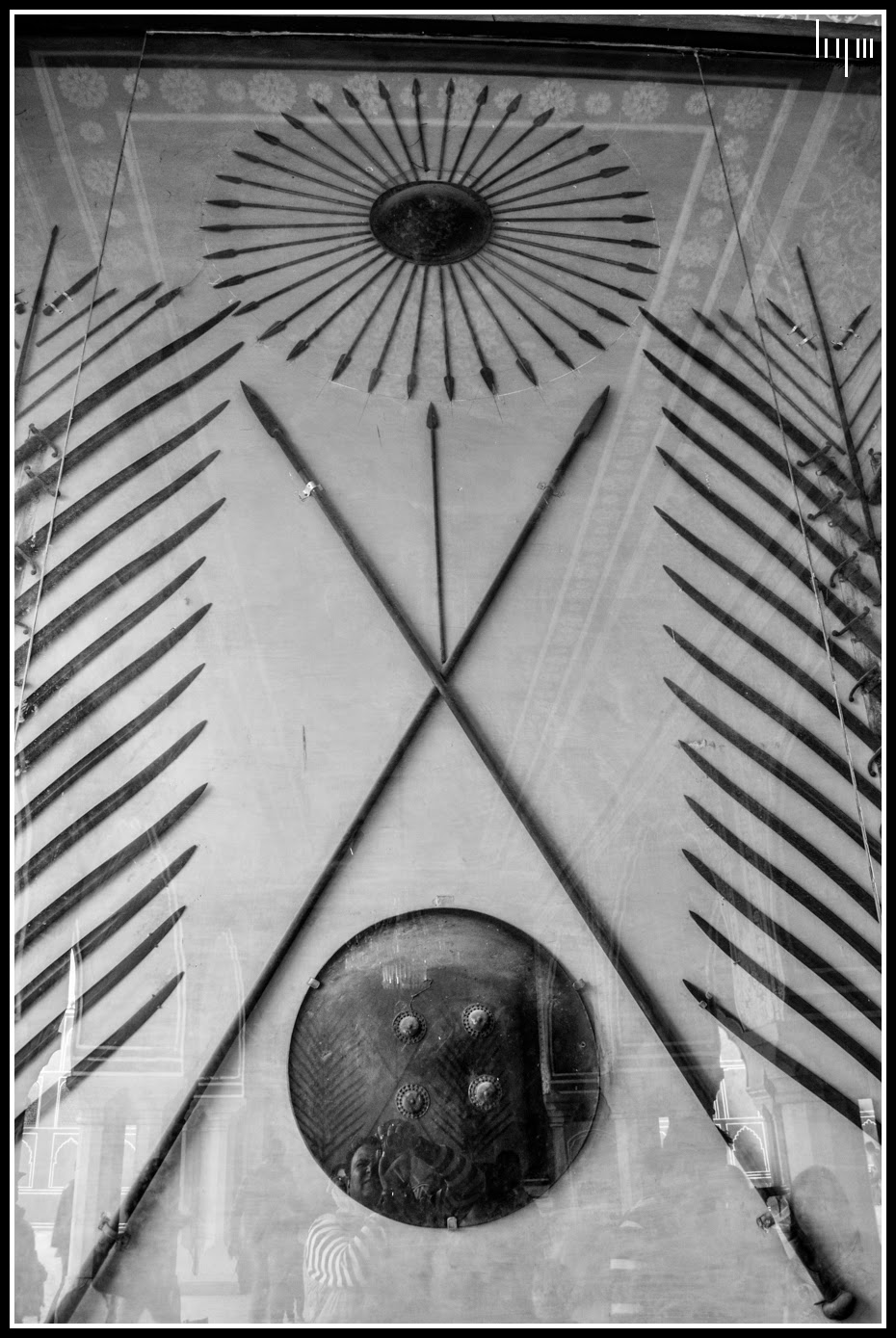City Palace is a palace complex in Jaipur, the capital of the Rajasthan state, India. It was the seat of the Maharaja of Jaipur, the head of the Kachwaha Rajput clan. The palace complex, located northeast of the centre of the grid-patterned Jaipur city, incorporates an impressive and vast array of courtyards, gardens and buildings.
 |
The clock tower of the palace
|
Entrance gates
Gates to the palace are very colorful and richly decorated.
 |
| First gate leading to the Palace and its courtyard |
You will find lots of pigeons feeding and resting around the gates.
The second gate. The tickets are sold near the second gate.
 |
| A small statue of Lord Ganesha is found on each gate |
 |
| A picture of the King |
The gate leading to the courtyard
 |
| Close-up of the art work |
 |
| Canons |
 |
| Puppet show |
Diwan-i-Khas
Diwan-I-Khas was a private audience hall of the Maharajas, a marble floored chamber. It is located between the armoury and the art gallery.
 |
| Lamp pillar |
 |
| A tulsi tree near the Armory |
 |
| Close-up of the art work on the tulsi tree pot |
 |
| The art work on the wall with the shadow of the palace over it |
There are a number of crystal chandeliers hanging from the ceiling.
 |
| The art work on the Diwan-i-Khas walls looks beautiful in black-and-white |
There are two huge sterling silver vessels of 1.6 metres (5.2 ft) height and each with capacity of 4000 litres and weighing 340 kilograms (750 lb), on display here. They were made from 14000 melted silver coins without soldering. They are officially recorded by the Guinness Book of World Records as the world's largest sterling silver vessels.[14] These vessels were specially made by Maharaja Sawai Madho Singh II, who was a highly pious Hindu, to carry the water of the Ganges to drink on his trip to England in 1901 (for Edward VII's coronation) as he was finicky about committing religious sin by consuming the English water. Hence, the vessels are named as Gangajelies (Ganges-water urns)
 |
| Feels like an illusion |
The Royal Guard
Pitam Niwas Gate and Chowk
It is the inner courtyard, which provides access to the Chandra Mahal. Here, there are four small gates (known as Ridhi Sidhi Pol) that are adorned with themes representing the four seasons and Hindu gods. The gates are the Northeast Peacock Gate (with motifs of peacocks on the doorway) representing autumn and dedicated Lord Vishnu; the Southwest Lotus Gate (with continual flower and petal pattern) suggestive of summer season and dedicated to Lord Shiva-Parvati; the Northwest Green Gate, also called the Leheriya (meaning: "waves") gate, in green colour suggestive of spring and dedicated to Lord Ganesha, and lastly, the Rose Gate with repeated flower pattern representing winter season and dedicated to Goddess Devi
Source: http://en.wikipedia.org/wiki/City_Palace,_Jaipur










































No comments:
Post a Comment